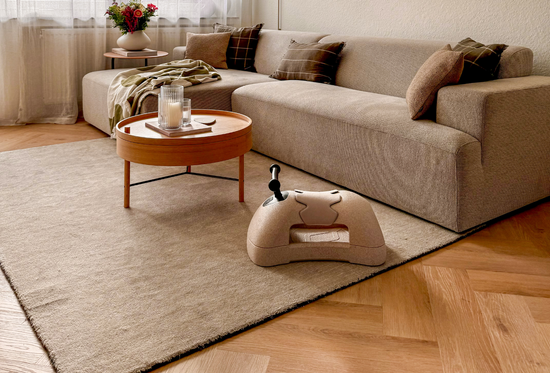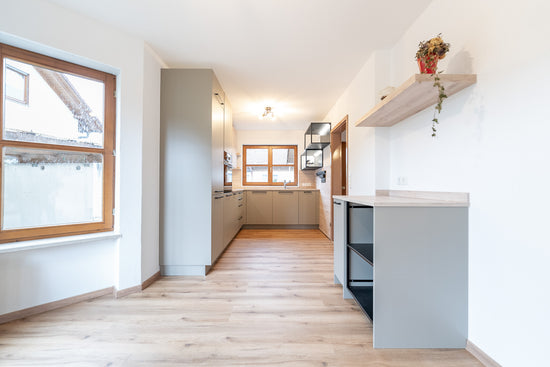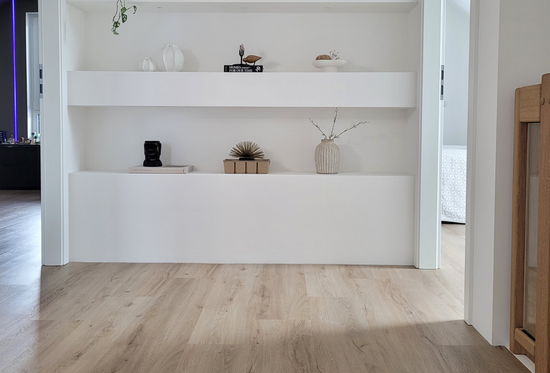Table of contents
- Introduction
- Laminate floor
- Parquet floor
- Tile floor
- Vinyl flooring
- Carpet flooring
- Natural stone floor
- Conclusion
Choosing the right flooring for your home can play a crucial role in the overall impression and functionality of your rooms. In this comprehensive comparison, you will learn which flooring best suits your needs and lifestyle.
2. Laminate floor
Advantages:
- Affordable
- Varied designs and patterns
- Easy installation
- Easy care
Disadvantages:
- Not as robust as other coverings
- Prone to moisture damage
Ideal for: living room, bedroom, hallways
3. Parquet floor
Advantages:
- Natural appearance
- Durable and hard-wearing
- Increases property value
Disadvantages:
- Sensitive to moisture
- More expensive than some other options
Ideal for: living room, dining room, bedroom
3. Tile floor (ceramic or porcelain)
Advantages:
- Extremely durable
- Water-resistant
- Varied designs and patterns
Disadvantages:
- Can seem cold and hard
- Complex installation
Ideal for: Kitchen, bathroom, hallways
4. Vinyl flooring (click and glue vinyl)
Advantages:
- Cost savings
- Water-resistant
- Versatile use
- Easy installation
Ideal for: All rooms
5. Carpet flooring
Advantages:
- Soft and comfortable
- Soundproofing
- Thermal insulating
Disadvantages:
- Difficult to keep clean
- Prone to stains and wear
Ideal for: Bedrooms, living rooms
6. Natural stone flooring (e.g., marble, granite)
Advantages:
- Luxurious appearance
- Extremely durable
- Increases property value
Disadvantages:
- High costs
- Requires professional installation and maintenance
Ideal for: Entryways, bathrooms
Conclusion
Choosing the right flooring depends on your individual needs, your budget, and your personal taste. Every flooring type has its pros and cons, but there is no "best" flooring for everyone. Before you decide, you should carefully consider which flooring best suits your home and meets your requirements. Think about the specific needs of each room and choose accordingly.




